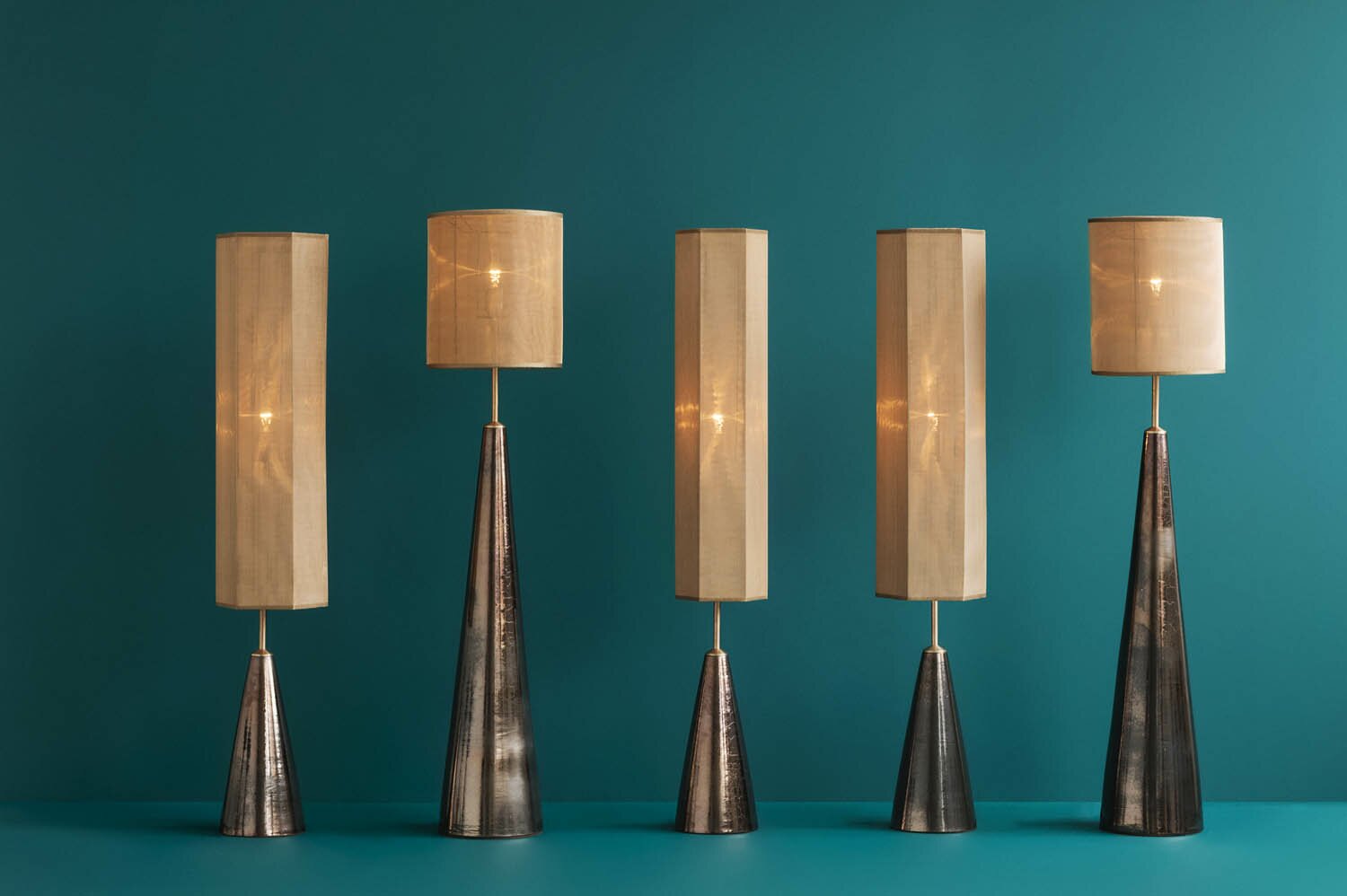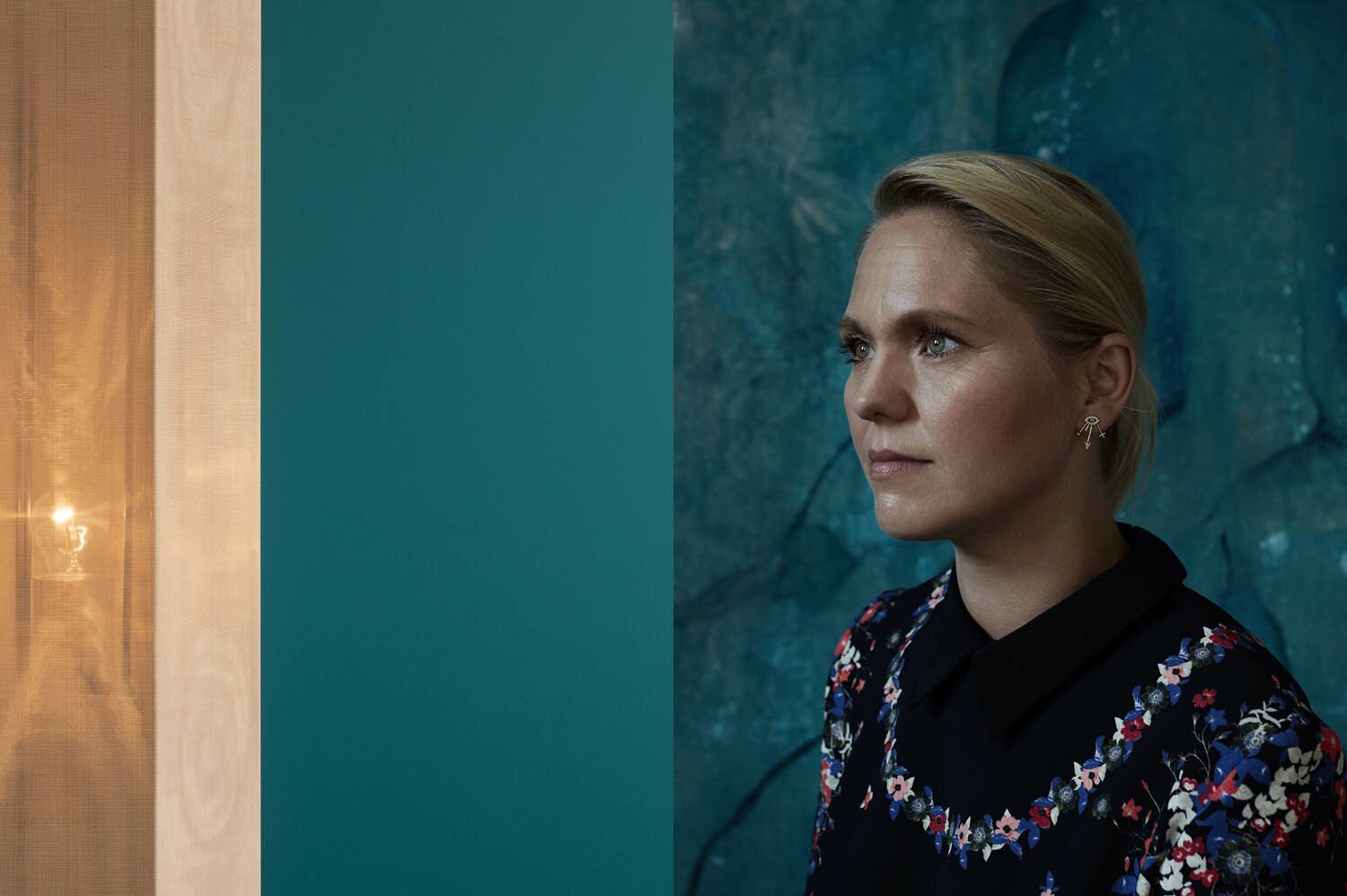Milan Design Week: Catherine Raben Davidsen x Nilufar Gallery
To celebrate the new Design issue launching at Milan Design Week from April 4-9, Oak presents a series previewing the the best new Nordic projects and collaborations to debut at the annual Salone del Mobile
Milan design week might have started as a trade event focused on furniture design, but in recent years it has become an increasingly diverse and complex showcase for design in all its forms.
One area that has been gathering momentum over the past few years is collectible design, where the boundaries between art and function become increasingly blurry, with an expanding ripple of design galleries and artists presenting work during design week.
Among those making their debut at design week this year is Danish artist Cathrine Raben Davidsen, who has created a collection of sculptural lamps and ceramic pots for Milan’s Nilufar Gallery in partnership with her Swedish husband Jens Lindegaard.
Combining ceramics with unusual metal textiles, the aesthetic of each design celebrates the beauty of the imperfections that creep in during their labour-intensive production processes.
Both featuring cone-like bases, Triangle Lamp comes with a hand-made cylindrical shade, while Hexagon Lamp will be available with two different hexagonal shades. The ceramic vessels feature human-like protrusions.
The Triangle Collection by CRD Studio will be displayed at Nilufar Gallery at via della spiga, 32, from 4 to 9 April 2017.
Oak invited Cathrine to tell us more about the process and inspiration behind the Triangle Collection:
Oak: How did the relationship with Nilufar Gallery come about?
Catherine Raben Davidsen: In some way, it’s coincidences that led me to make ceramic lamps and to the collaboration with Nilufar Gallery. I have always loved ceramics and after travels to both Japan and Mexico over the past years I have been very much inspired by Pre–Columbian terracotta works and ancient Japanese craft traditions, including special glazing techniques and Raku firing. After our last trip to Japan my husband Jens gave me a Raku kiln for my birthday, and we began doing our own Raku firings in our country house in Sweden. It is a complex technique and Jens is very good at it.
The first lamp was made 18 months ago and it really began as a playful experiment. I exhibited the very first ceramic lamps at the design gallery The Apartment in Copenhagen, and people who saw my lamps independently to each other asked if I knew Nina Yashar from Nilufar Gallery. I looked her up and was very excited about how she curates and puts together both contemporary and vintage, mixing different generations and genres and providing a place for the works to breathe and interact across all kinds of possible and impossible borders.
I sat down and wrote to her exactly one year ago and got a standard reply in return, which stated that Nina Yashar was busy but would look at the material at a later date. Some weeks went by and then I got mail from them, asking if I could come to Milan.
Jens is an ophthalmologist and I’m neither a designer nor ceramicist, and we made that clear to Nina. But quickly there was a mutual understanding. We had a great dialogue, and after a few hours we were already in the initial process of designing the Triangle Collection. Jens and I have been together for 18 years, and this collaboration is certainly not something I could have predicted, but we have just seized this opportunity and given it our all.
We have been working since August on the Nilufar collection that will be presented in connection with the Milan Design Week 2017 at Nilufar Gallery in an exhibition with legendary Joaquim Tenreiro, considered to be the father of Brazilian design, and Michael Anastassiades.
Oak: What appealed to you about the idea of making functional objects?
Cathrine Raben Davidsen: I very much see the lamps as forms of sculpture and as part of my artistic oeuvre as a whole. I have a strong fascination with materials and an urge constantly to experiment with and explore different artistic techniques and I like the idea of making an object that can be of a functional use besides being something to look at.
All of the lamps are handmade, unique pieces. Some of the lamp shades are made of curtain material from my childhood home, while others are made from hand-dyed silk. One of my lamp designs Checkered Lamp is hand painted with small triangles that take most of a day to paint. I do not want to limit myself, for me it is about taking the chances that come my way and going with them without thinking too much.
Oak: How did you cope with the very different manufacturing process compared to your painted work?
Cathrine Raben Davidsen: The production for Nilufar has been very challenging, because we have a large team of skilled artisans involved. Being dependent on other people and their expertise is not something that I am used to in my own art practice as it is mostly a one-on-one dialogue between me and my paintings and nothing else. So it has been a test of my patience, because things in a design process take a very long time and many things have to fit together like in a very complicated puzzle.
Oak: What was the inspiration for the collection?
Cathrine Raben Davidsen: There is a play between the geometric forms, the cone, the hexagonal shade and the organic qualities that clay has and the glazing that is very hard to predict. Something very controlled juxtaposed with something almost ephemeral.
Oak: Is it important for the viewer to be able to see how much physical labour goes into the production of each piece?
Cathrine Raben Davidsen: Yes, we do hope that it will reflect, when you see the lamps. For instance, the bronze woven-wire-mesh lampshades are extremely challenging to make. They are carefully crafted and it takes over 20 hours to hand sew one shade. Every little sew hole is made by hand and the ceramic lamp bases are hand-turned, while the bronze fittings are made from solid blocks of bronze. All parts are custom-made to fit each individual piece of work and represent a highly labour-intensive process.
We are extremely proud of this collection, the imperfections and slight variations are very much part of what we are interested in. A handmade piece can never be perfect like a machine made made piece. I love this. Something not perfect, like people.
Oak: Do you think it’s important that your partner is also from a Nordic country? Does this have an affect on the aesthetic of the final piece?
Cathrine Raben Davidsen: My husband Jens grew up in southern Sweden, and surrounded by the different kind of nature and culture that Sweden offers. He has brought another aspect of the Nordic aesthetic and vibe to the collection.
Oak: The borders between art and collectible design seem to be increasingly blurry – why do you think this might be happening?
Catherine Raben Davidsen: There has always been this kind of play between art and design. I grew up in a very creative and bohemian family, where nothing seemed impossible as long as you pursued and persevered. That has influenced me tremendously in my life and in the approach to my work as an artist. I am not afraid to enter into different territories as long as I stay true to myself and besides, I never put things into categories.

